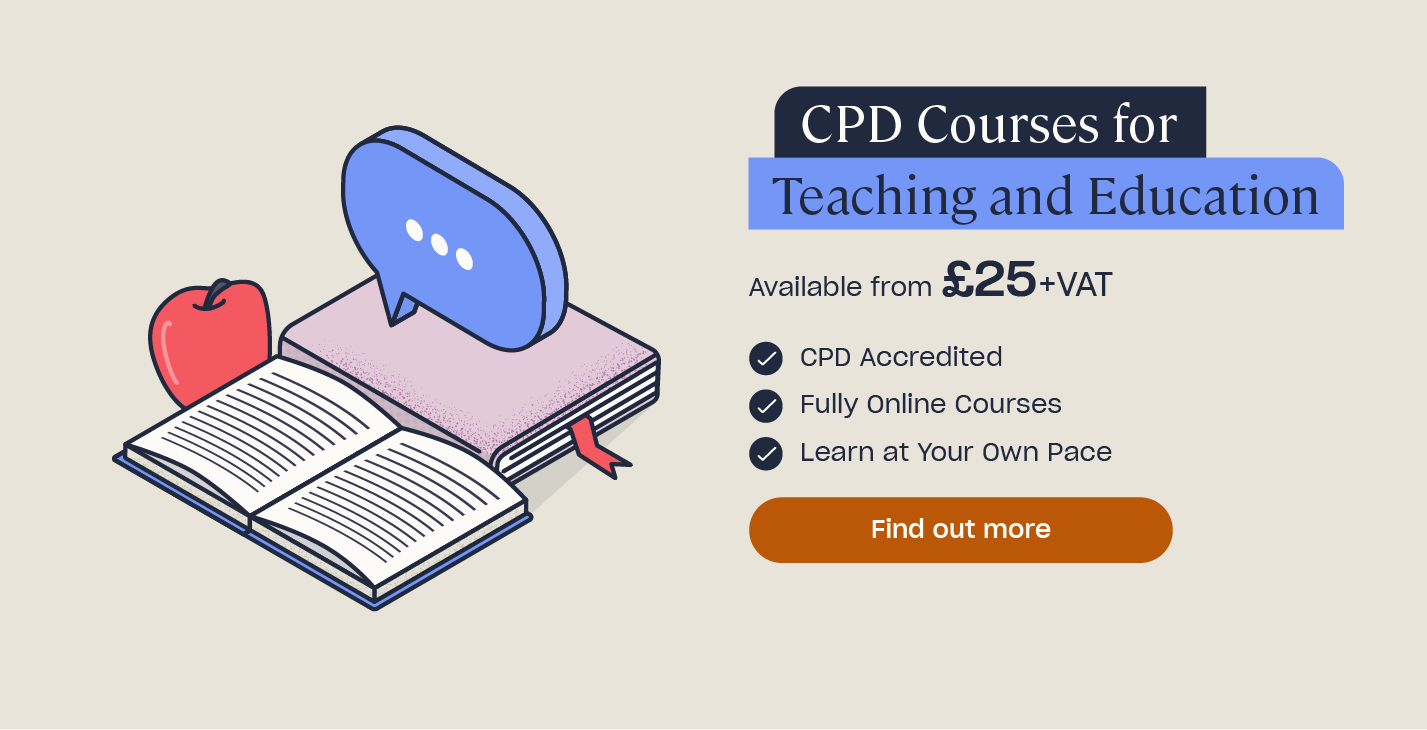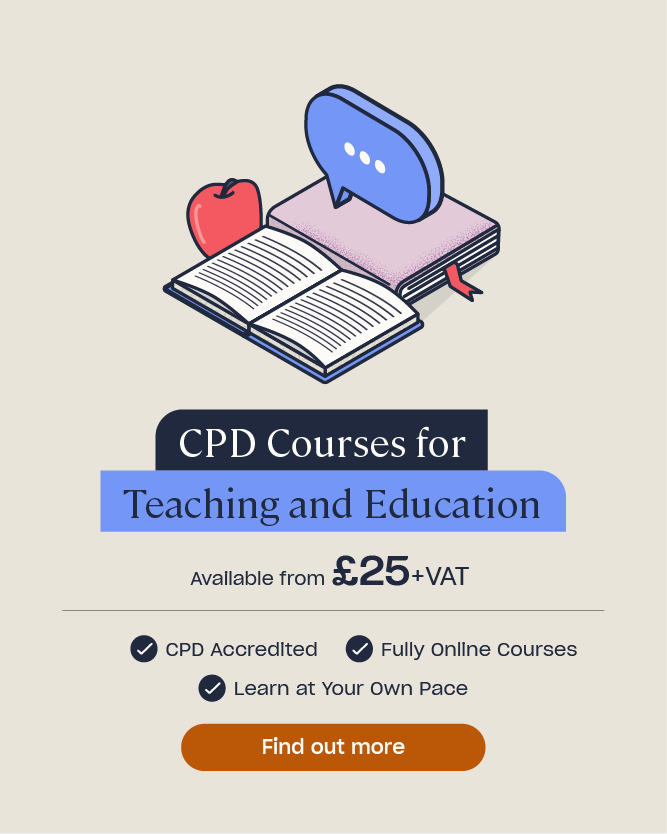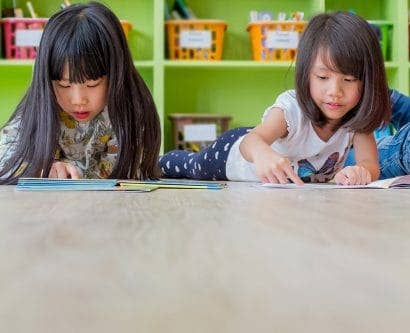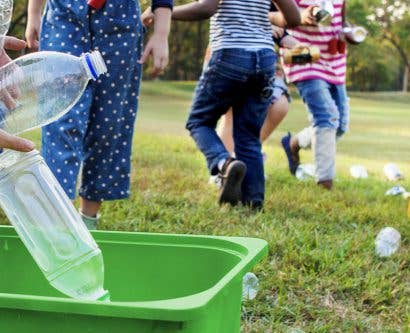Effective Interventions in Education: Types and Examples
‘Intervention’. If you work in a school, you’re likely to hear the term used innumerable times a day. Now an intrinsic part of school life, interventions in education allow teachers and teaching assistants to address any gaps in a child’s progress or attainment. Once a need has been identified, effective interventions can then be used to overcome any barriers in the child’s learning.
In this article, we’ll overview the main types of interventions in education. We’ll then look at a range of strategies and practical examples that you can use when planning effective interventions for your students.
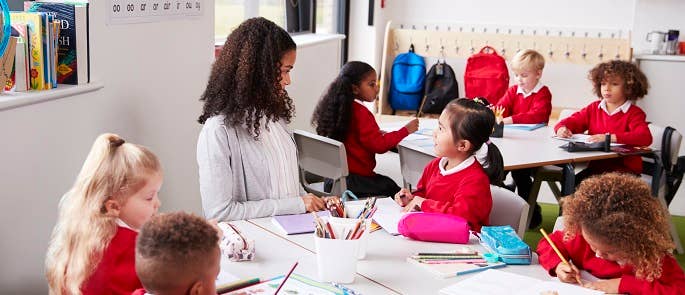
What are Interventions in Education?
In educational settings, interventions are often used to describe a focused teaching session, which is a deviation away from existing teaching practice. Interventions in schools can be one-to-one, or delivered as a group. The aims of the programme will have been carefully created by a teacher or teaching assistant based on a key area of need. For example, inference in reading, or units of time in maths. Interventions should be delivered alongside Quality First Teaching, and are often used to support children with SEND.
Many issues children face in their learning are inter-connected. It might be that a child is displaying concerning behaviour, and is falling behind academically, so each intervention needs to address each individual’s specific areas of need.
As a result, some interventions are targeted, and are put in place to address a certain weakness. These interventions are likely to be more formally monitored in order to track the child’s progress, whereas other interventions are more flexible, and adjust according to the changing needs of the student.
Some interventions can be costly and time-consuming. In order to be effective, there needs to be a demonstrable impact, so structuring interventions requires strategic thinking.

Types of Intervention in Schools
There are many different types of interventions in schools. Let’s take a look at the most commonly used intervention strategies:
Behavioural Interventions
Collaborative Interventions
One-to-One Interventions
Classroom-Based Interventions
Social, Emotional and Wellbeing Interventions
Peer Tutoring
Metacognition and Self-Regulation
Homework
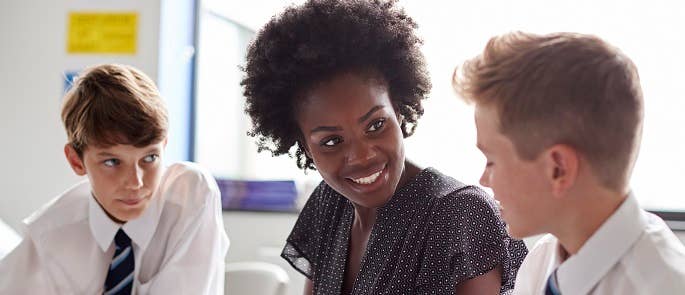
Why are Effective Interventions Important in Schools?
Interventions can be an incredibly beneficial aspect of school life.
Using a structured intervention, teachers can swiftly close progress or attainment gaps in a key area. They can also see the demonstrable impact of their practice, and share it with the child and their parents or carers.
Challenging behaviour in the classroom is one of the greatest barriers to learning. But behavioural interventions can help to address low-level behaviour, and, as a result, build relationships in the classroom, therefore improving the teaching and learning experience for the teacher and pupils.
When pupils fall behind their peers, they can begin to lose confidence. Implementing interventions can help to build a child’s self-worth, as well as their academic understanding. Equally, interventions often take place in a nurturing, safe environment, which can positively contribute to students’ overall wellbeing.
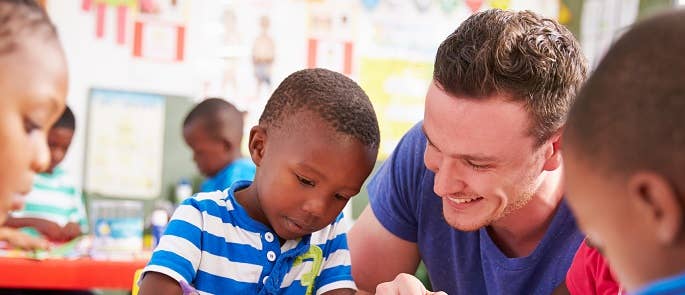
How Might Teachers Plan Effective Interventions?
In order to plan an effective and impactful intervention, you must first identify what it is you wish to achieve. The outcome you decide upon should ideally be monitorable, so that you can demonstrate the impact of the programme. At this stage, it may also be worth discussing any previous interventions you’ve used in order to unpick their success rates. If we prioritise interventions within the teaching and learning policy, then they’re more likely to have a sustainable impact.
Work with a colleague to consider:
- What will we be doing?
- Why are we doing it?
- How will we implement the intervention?
- Will we be able to monitor the process, and if so, how?
- And to what aim?
Once you have selected the child or children for the intervention, next look holistically at the provision in your school. What can you realistically offer? Who will deliver the session? Where? At what point in the day?
When you’ve addressed any logistical barriers, strategic planning will then be needed to address any challenges you may face. For example, staff may need to increase their knowledge and understanding prior to delivering a particular intervention. Keeping staff motivated and enthused will be crucial in the programme’s success. Additionally, a potential challenge may be that children are involved in too many interventions, which may simply lead to students feeling overwhelmed, negating any form of progress.
Before you begin the programme of intervention, remember to organise a baseline assessment, so staff can effectively monitor the child’s outcomes.
Throughout the sessions, consider how any members of staff involved will feedback on progress and target setting. And finally, when it comes to assessing outcomes, ensure you have collected tangible evidence of the intervention’s impact. This could be an increased reading age, or a journal created by the child, reflecting their increased understanding of strategies they can use to improve their wellbeing.
If the intervention was a success, try to make time as a team to discuss why. Share the practice with the rest of the school, and consider whether the programme could be rolled out across other year groups.
This handy guide from the Education Endowment Foundation (EEF) allows you to compare which interventions are most impactful, based on evidence strength, impact and cost.
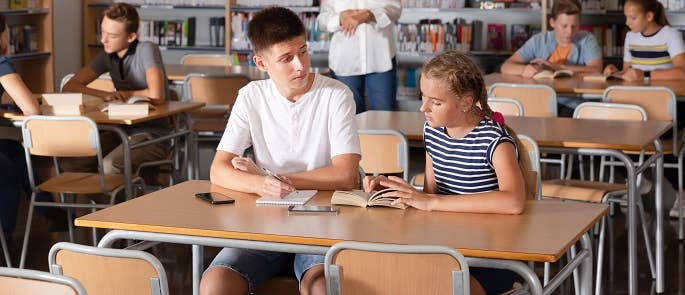
Examples of Classroom Intervention Strategies
Interventions in the classroom may take many different forms.
It might be that a group of children are struggling with a particular concept. The teaching assistant might then work with those particular children to spend time consolidating their knowledge of shape before they move further into the topic.
Equally, a collaborative intervention might take place in class to deepen and strengthen students’ knowledge and understanding of a poet’s techniques and language use.
A teacher’s ability to identify early areas of need within the classroom can prevent any learning issues from becoming bigger barriers to education.
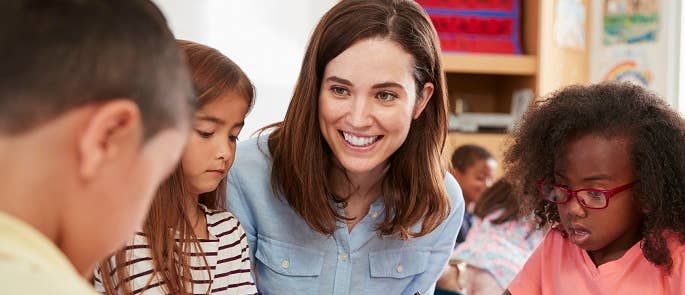
How to Create a Successful Intervention: Top Tips
1. Make it fun
Particularly important when working with Primary aged students, it is vital to grab their attention and make the learning experience memorable. You might consider getting outside and using the natural environment to practise symmetry, or use drama to analyse characters in fiction. For secondary aged students, it’s also important to make it engaging, and be sure to make the purpose of the intervention clear to them, so that they can really see how it will benefit them.
2. Link to wider learning
In order for the students to make links between key concepts and subject areas, try and link the content to wider class learning. Consider liaising frequently with the class teacher to ensure that the content aligns with the learning objectives which are being covered with the rest of the class and try to use similar case studies or examples to those which they plan to teach.
3. Timing is key
With regard to neurodiversity, a student with ADHD, for example, may resent being taken out of a creative subject they love and excel in, in order to make progress in a subject they find challenging.
4. Personalise the sessions
Every student is unique. They all have differing areas of need, and different skills and talents. As a result, when planning an intervention, try and tap into what it is that will really spark their interest and keep them motivated.
5. Consider staff wellbeing
It is vital that staff feel supported in delivering their interventions, so check in with them frequently and show an interest in the progress they are making. They must be offered adequate training for the role, and they must be given enough time to effectively plan their sessions. The interventions should also be carefully planned into their timetables so that they are balanced and manageable, for example, staff may find a full day of back to back interventions quite overwhelming so if it is possible, try to space them out.
6. Play to your strengths
Use staff in a strategic manner by playing to their areas of strength. As a team, work out where your skills and interests would be best placed when matching staff to both subject areas and individual students. It may be that a teaching assistant has a degree in a certain subject, and would feel particularly comfortable delivering interventions in that area, so make the most of those situations!
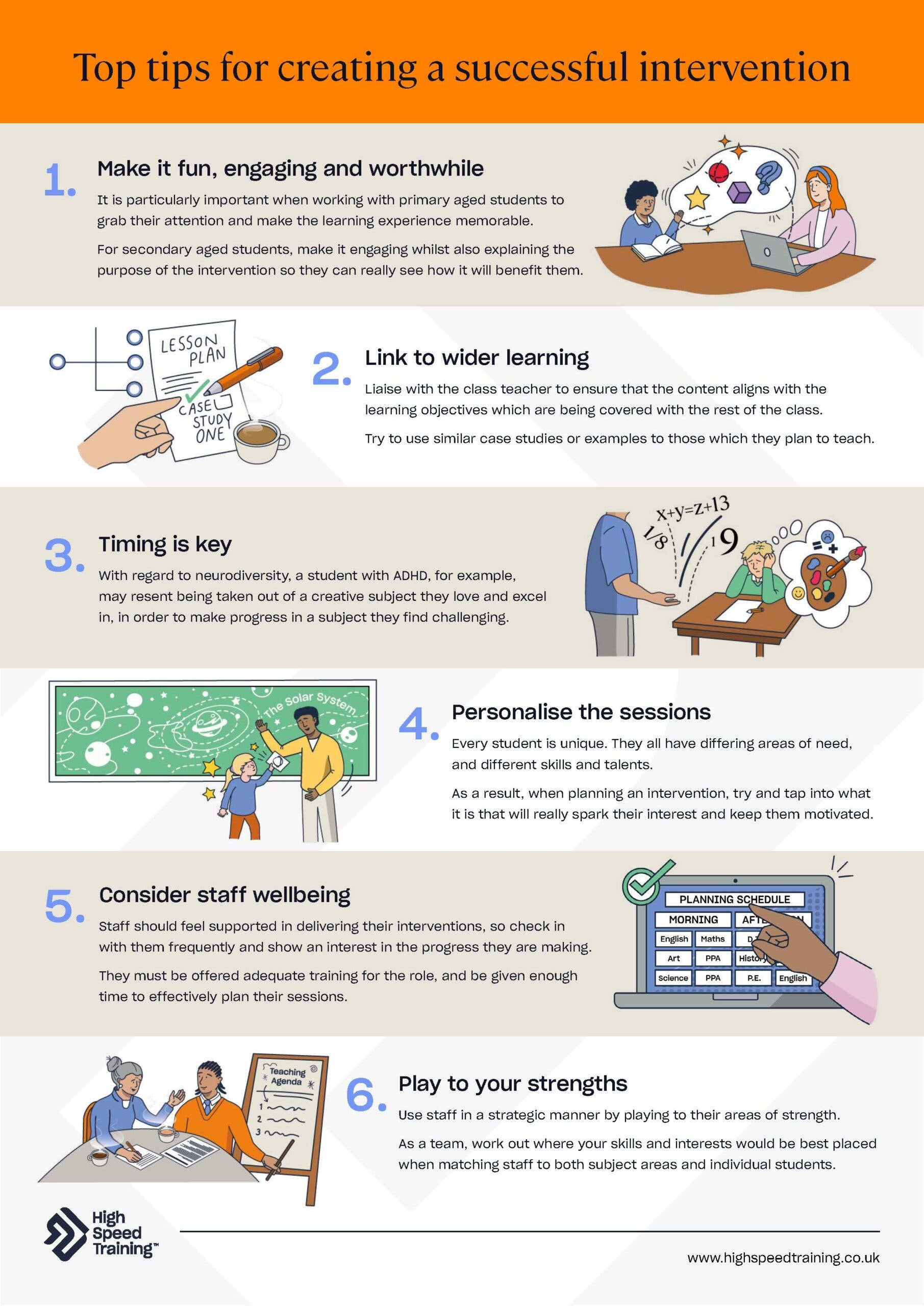
Creating an intervention in school can seem challenging. But if the programme is created in a structured and strategic manner, the chances of it being successful are much higher.
Yes, interventions involve budgets, monitoring, and data, but at the heart of every programme is the child. Effective interventions help today’s young people navigate whatever challenges they may face, and your role can be crucial in helping them to reach smoother seas.
Further Resources:
- CPD Courses for Teaching Staff
- Metacognition in the Classroom: Benefits and Strategies
- Communication in the Classroom: Skills for Teachers
- What is Restorative Practice in Schools & Social Work?
- Promoting Effective Communication with Parents in Education


